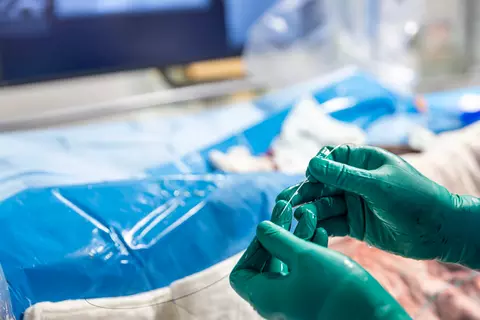Impact of long-term transmural plastic stents on recurrence after endoscopic treatment of walled-off pancreatic necrosis
Jong DM et al, Endoscopy. 2024;56(9):676–83
Leaving double-pigtail stents in situ seemed to lower the risk of recurrent fluid collections in this retrospective cohort study. The results of this study suggest that double-pigtail stents should not be removed and can be safely left indwelling indefinitely.
Background: Endoscopic transmural drainage (ETD) using double-pigtail stents (DPSs) is a well-established treatment for walled-off pancreatic necrosis (WON). This study aimed to compare outcomes in patients undergoing ETD with DPSs left indwelling versus those where stents were removed or migrated.

Methods: This retrospective multicenter cohort study included patients with WON who underwent ETD using DPSs between July 2001 and December 2019. The primary outcome was recurrence of a pancreatic fluid collection (PFC). Secondary outcomes were long-term complications and recurrence-associated factors. Competing risk regression analysis considered DPS removal or migration as time-varying covariates.
Results: Among 320 patients (median age, 58 years; 36% women), DPSs were removed in 153 (47.8%), migrated spontaneously in 27 (8.4%), and remained indwelling in 140 (43.8%). PFC recurrence was observed in 57 patients (17.8%): after removal (n = 39; 25.5%); after migration (n = 4; 14.8%); in patients with indwelling DPSs (n = 14; 10.0%). In 25 patients (7.8%), drainage of recurrent PFC was indicated. Risk factors for recurrence were DPS removal or migration (hazard ratio [HR] = 3.45, 95% confidence interval [CI]: 1.37–8.70) and presence of a disconnected pancreatic duct (HR = 5.08, 95% CI: 1.84–14.0).
Conclusions: Among patients who undergo endoscopic transmural drainage of walled-off pancreatic necrosis, leaving double-pigtail stents (DPSs) in situ seems to lower the risk of recurrent fluid collections, without any long-term DPS-related complications. These results suggest that DPSs should not be routinely removed and can be safely left indwelling indefinitely.